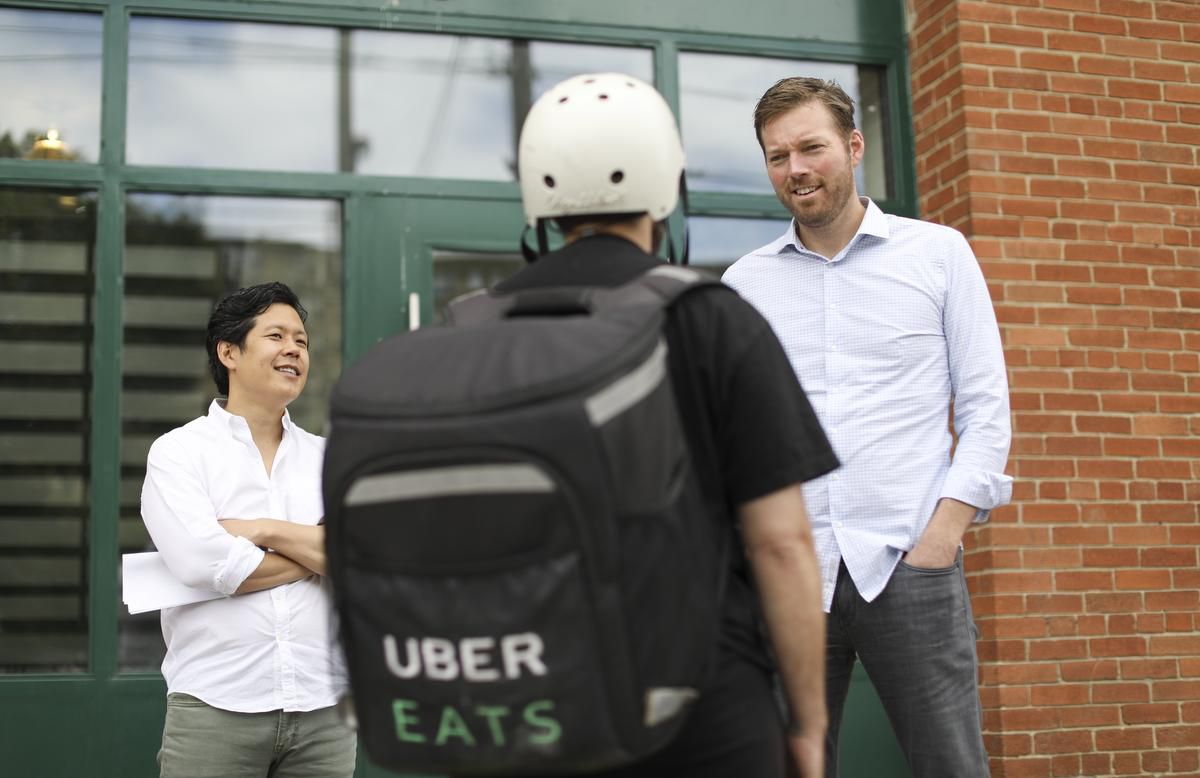Malls experimenting with fancy marketplaces to lure back shoppers
Move over, food courts. The invasion of the food halls has begun.
These new culinary destinations have sprung up in a number of Canadian cities: Ottawa, Montreal, Toronto, Winnipeg and Calgary all boast new, high-concept marketplaces, offering a selection of dine-in options as well as takeout. Three are in development in Vancouver.
Instead of McDonald’s, Subway, Tim Hortons and other national franchised chains, visitors to a food hall will find options such as craft beer, tacos, ramen and other exotic specialties, often being prepared in open kitchens. Similar foodie-focused environments can be found in European cities.
“These are the best-of-the-best of our local, chef-centric, foodie culture food operators,” says Jim Ludlow, president of True North Sports and Entertainment, the company behind the newly-opened Hargrave St. Market in Winnipeg. “I would expect you’ll see these things evolve in gentrified areas in urban centres in the downtown cores of many cities in Canada.”
The phenomenon is being driven by two strong trends, the first being Canadians’ desire to eat well with minimal effort. Just consider the popularity of time-saving conveniences, such as meal delivery services, Uber Eats and SkipTheDishes, as well as meal-kit subscription delivery services available through HelloFresh, Goodfood and others.
The second trend relates to property developers and managers who are eager to experiment with new strategies — ways to lure consumers back to the mall, in an era when a growing number of people shop online. (Market research firm eMarketer pegged Canadian ecommerce growth at over 20 per cent last year.)
Tony Grossi, president of Wittington Properties, the real estate division of George Weston Ltd., said food halls present an exciting new attraction.
“Shopping centres are looking for ways to engage the consumer in a more meaningful way,” he says, standing near the gelato bar at Eataly, the new 50,000-square-foot marketplace in downtown Toronto. “A lot of the products in shopping centres these days are being commoditized by e-commerce, but it’s very difficult to commoditize hospitality and food and food retailing.”
Grossi says since Eataly opened its doors in November, it’s been attracting new customers to Manulife Centre, an office and shopping complex near Toronto’s tony Yorkville neighbourhood. They come to dine at one of the four sit-down restaurants inside the marketplace, or to shop for fresh fish, cheese, fresh produce and a large assortment of imported Italian products.
Less fashion, more food at the mall
He believes many mall owners are looking to shift the mix of retailers found along their corridors — away from commodities like clothing and more towards food.
“Shopping centres over the years were over-weighted in fashion and soft goods. I think there’s a conscious migration away from soft goods and more into hard goods like electronics and hospitality and food,” says Grossi.
A recent report from the International Council of Shopping Centers compares sales per square foot generated by different types of retail, including jewelry, apparel and furniture. Food is at the top of the list, second only to electronics.
Jonathan Gitlin is the president of RioCan, one of Canada’s largest real estate developers. The company is currently building a massive complex in Toronto called The Well. It will feature condos, offices and an 80,000-square-foot food hall.
Gitlin says Canadians’ tastes have become more sophisticated over the years and attributes that to growing multiculturalism, as well as travel abroad.
“My kids love Indian food more than they love a hamburger,” he says.
The ‘theatre’ of food
He also credits millennials with driving an interest in what he called the “theatre” of food. The Well will feature dozens of open kitchens offering made-to-order meals.
“It sounds a little bit bizarre, but it’s true. There’s a lot of theatrics with food. People actually enjoy the experience not just going to consume food, but to spectate it — to watch it being made.”
He says he’s seen research that millennials are willing to spend more of their disposable income on experiences than on material goods.
High quality, higher prices
But can Canadians afford all these higher-end, fancy options? A pizza lunch at Eataly with a glass of wine, for example, costs about $40 per person, including tip.
Grossi says better food means higher prices.
“If you’re looking for quality, and we will have that quality, then you’ll pay a higher price for that higher quality. So really, it’s the choice of the consumer where they want to spend their money.”
He adds that he and his partners don’t expect people to dine at Eataly every day of the week.
“Maybe on another day, they’ll eat in a food court,” he says.
RioCan’s Gitlin insists The Well won’t be only for the well-off.
“We want to provide it all, and we’ll let our consumers determine what works and what doesn’t. And we’ll be flexible. So if there is a seller of lobsters … not doing well at all — if you come back six months later, there will be someone selling something that is more acceptable and coveted by the market.”
On opening night at Winnipeg’s Hargrave market, visitors were impressed with the venue, calling it “beautiful” and “amazing.”
“Having local business is awesome because with local operators, everything gets put back into the community,” said Taylor Williams, at the opening event, while balancing a baby on her hip.
Christian Emeterio was there dining with a friend.
“I feel like food halls are the way to go, where people can go chill with friends and socialize more.”
CBC








Redes Sociais - Comentários